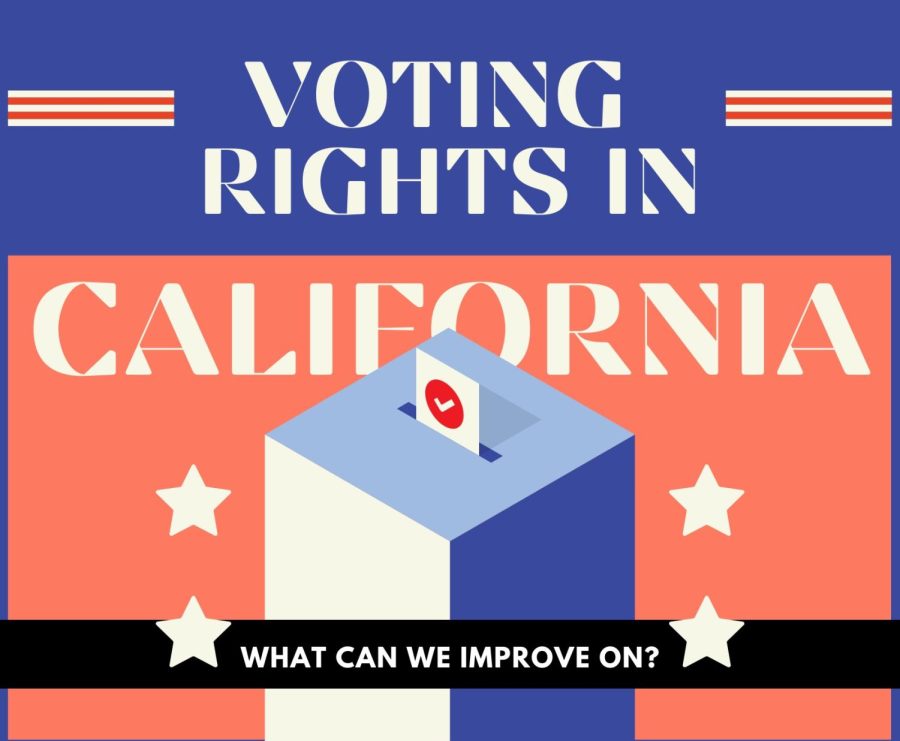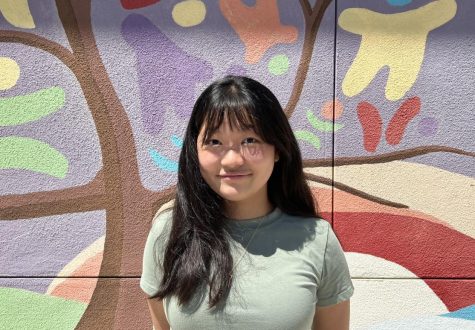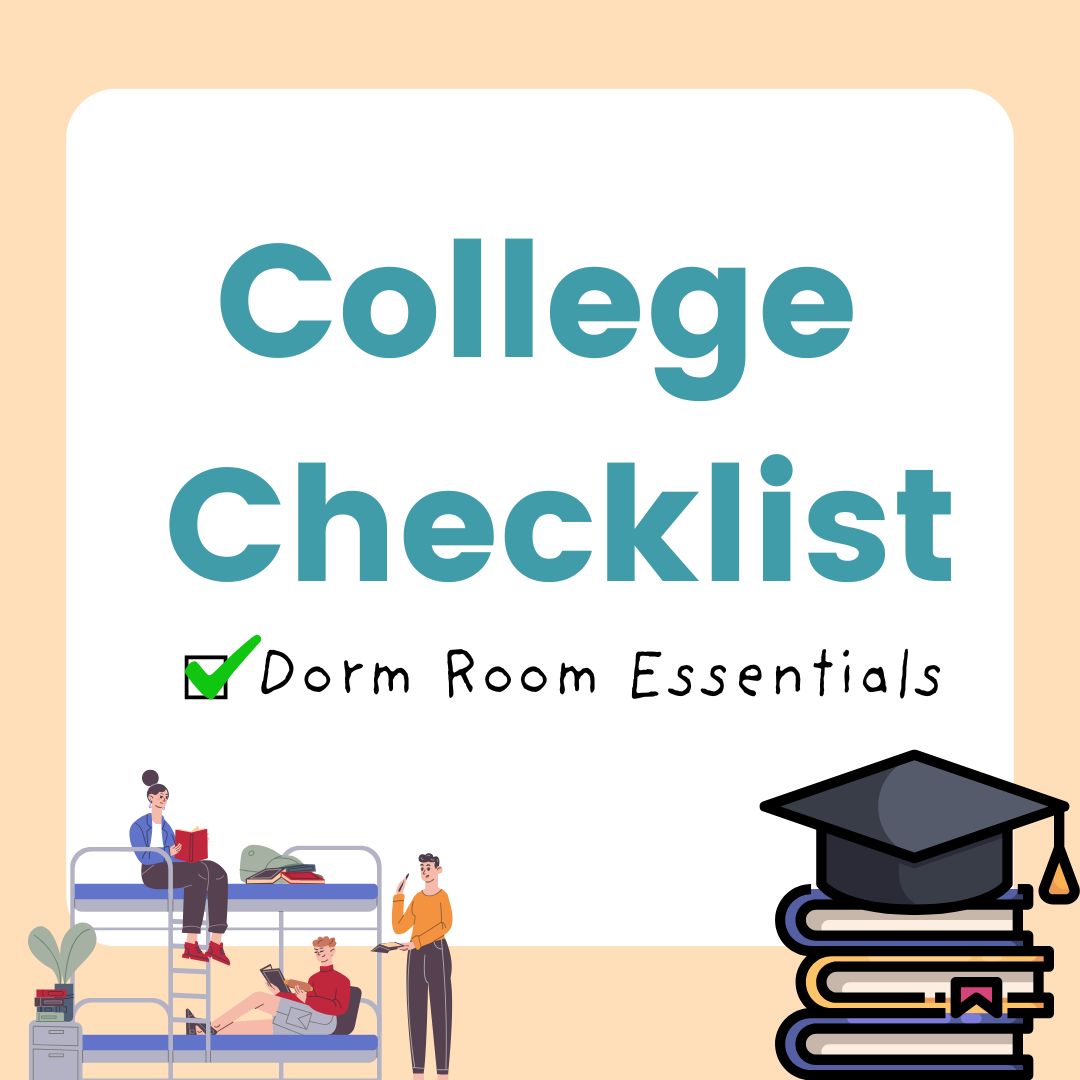Voting Rights in California: What can we improve on?
Every vote counts; how can we increase voter turnout through education and state policies?
February 10, 2023
In October 2022, social studies classes across campus participated in a mock election, learning about the candidates for the coming elections as well as the election process. With the topic of voting rights being brought to the table, how can schools and California as a state educate students and promote voting?
“When there is an election, we have the kids do research on the candidates, the parties, and the propositions. We have the kids navigate to different websites and do candidate and party research. We do a political spectrum quiz to help them determine their political views. We generally do that in election years.” said AP World History teacher Christopher Murphy.
Is there a problem with voting rights?
Under Article I Section IV Clause 1 of the Constitution, states can control the time, place, and manner of elections. California citizens are eligible to vote if they are at least 18 years old, registered where they currently live, not currently serving a prison term for the conviction of a crime, and if they are not currently found mentally incompetent to vote by a court.
However, many states have several boundaries that discourage citizens from voting. Barriers such as the location of ballad boxes, polling place closures, provisional voter requirements, poorly trained poll workers, and low voting hours reduce the voices of people within local, state, and federal elections.
Strict voter ID laws require identification to cast a ballot to reduce turnout, often working in Republicans’ favor, which is another example of a discriminatory boundary. These state laws have doubled the turnout gap between white and Latino populations and doubled the white-black turnout gap in elections as well. Most of these strict ID laws are passed by republican legislatures and politicians.
One justification for all the rules around voting is voter fraud. Yet research shows that fraud is rare, voter impersonation is almost nonexistent, and most alleged fraud is based on mistakes from voters or administrators. The rules built around avoiding this “huge” issue have made it harder for millions of eligible citizens to be able to participate.
A 2013 Supreme Court case Shelby County v. Holder brought the rights around voting into the spotlight. Shelby county in Alabama filed suit in district court, seeking a judgment that Sections 5 and 4(b) of the Voting Rights Act of 1965 are unconstitutional and a permanent injunction against enforcement of those policies. The final decision that Section 4 was unconstitutional led to the weakening of the Voting Rights Act.
“Young people in their twenties vote at a lower clip than most other groups of populations in the United States, so voter turnout and increasing voter turnout would force the government to do a better job at responding,” said Murphy. “If people were to vote more consistently, then the government would have to represent those concerns.”
How is civic education and participation related to voting?
Learning about voting is especially important for students and teenagers so that when they can vote, they are already educated and can confidently influence the outcomes of important decisions.
“If it’s something that you can experience earlier on, when you mature and are actually able to have a background and understand what is going on, you can confidently vote,” said Brian Jeon (‘23). “Especially because the voting population of the younger demographics has a lower political participation rate than the older generation, which causes limits matching to the voting results and actual complaints.”
Here at Amador, several classes through the grade levels educate kids on the idea of voting.
“The kids take civics during their senior year; I would say that’s the year in which the kids are going to be distributed the most information on voting, registering to vote, and the importance of being a citizen,” said Murphy. “The idea of democracy is introduced during sophomore year. Junior year during US History they start to understand what it means to be a citizen in the United States, and in government, they go even deeper into voting rights.”
By the end of senior year, most students are generally educated on the topic of voting. The problem is converting that knowledge into actual votes once they graduate.
“I’d say at least 75-80% of students are educated. The mock election helps people understand what it is like to vote and to help people understand the candidates to get a better context of which candidate they stand for” said Jeon.
One of the important ways the school district educates students on voting is through mock elections during election years.
“Kids see it takes discipline and work to be an informed worker, you have to understand what the candidates look for, what they represent, what the political parties represent. Sometimes kids think their ideas align with a specific party, ideal, or person, but after research, they realize their actual ideas are more closely aligned with a different party” said Murphy.
California only has around a 60-70% voter turnout, comparatively low when put next to states like Minnesota or Colorado, with a voter turnout of 70-80%. Although there is an abundance of petitions and websites for voting rights all over the country, what actual changes can we implement to see a real improvement in voter turnout?
“Some countries have mandatory voting, I would favor mandatory voting. Australia has mandatory voting, they do registration drives to get people to register to vote. There has also been talk of voting online. People would need to be informed first, then vote; we do not want uninformed people voting” said Murphy.
As long as the punishment for not voting is not over 20 dollars, mandatory voting can fix issues with representation and voter suppression within the country. We can model Australia’s system of mandatory voting that can improve the voting situation within our own country.
Giving citizens the time and space to vote is also an excellent way to increase voter turnout.
“One thing they could do is make election day a national holiday, most businesses would be closed, and it would be the people’s civil duty to go vote. Or they could do it on Sunday where more businesses are closed, maybe do it Super Bowl Sunday,” said Murphy.
The problem with voting and voting rights cannot be solved in one day, yet we can start working towards a better, more representative, and more participatory future in civics.






